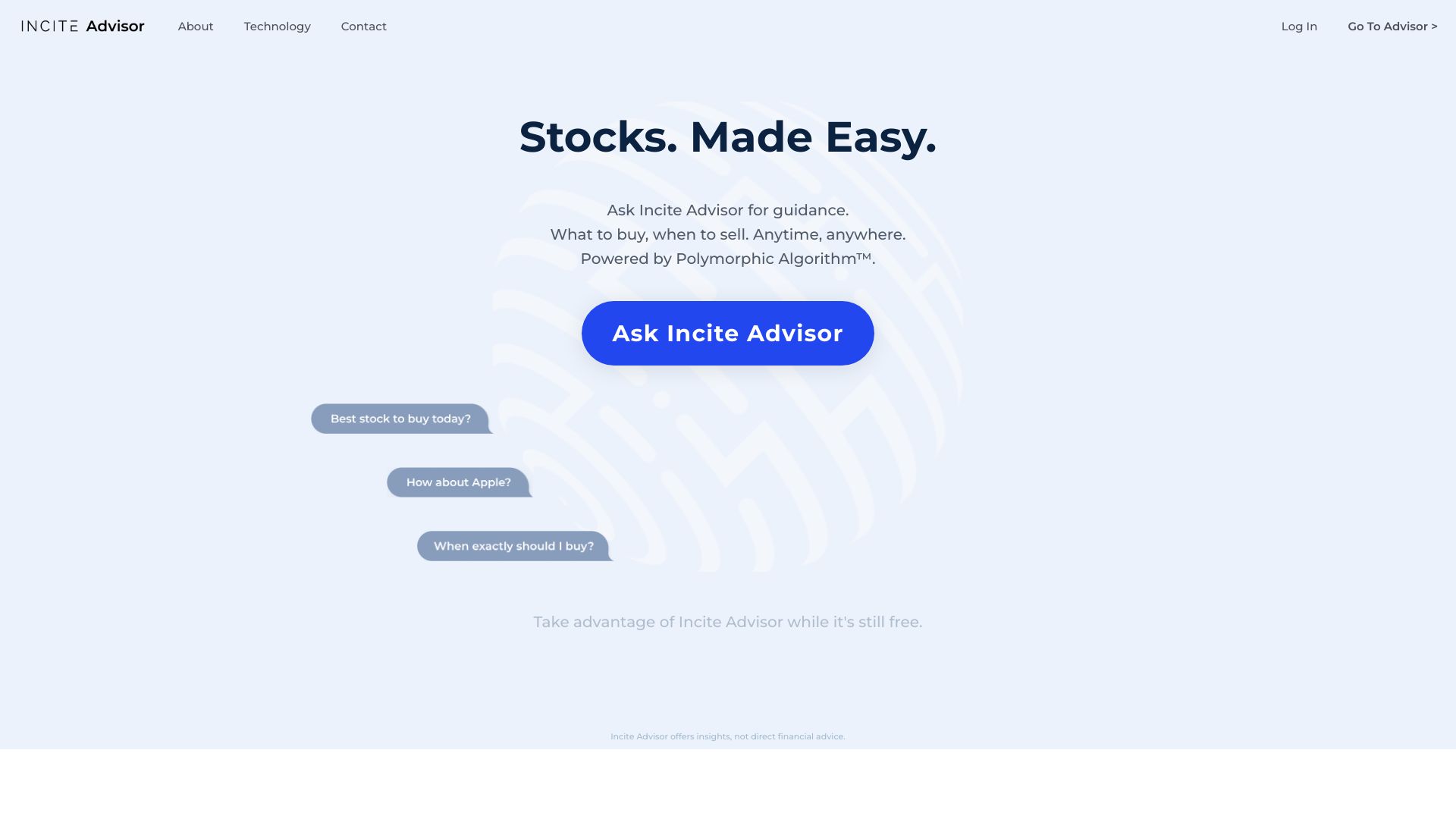20 Handy Advice To Deciding On AI Stock Predictions Analysis Websites
20 Handy Advice To Deciding On AI Stock Predictions Analysis Websites
Blog Article
Top 10 Tips To Assess The Strategy Customization Of Ai Stock Trading Platforms
AI platform for stock-predicting and analyzing stocks offer various options for customization that allow users to adapt their platform to their specific trading objectives, risk appetite, and market condition. A platform offering a range of customizations can enhance your trading. These are the top 10 ways to determine the capacity of platforms to tailor their strategies:
1. Evaluate Pre-Built Strategy Templates
A variety of templates: Find out whether the platform offers various already-designed trading strategies (e.g. day trading and swing investing, as well as long-term investment).
Easy to use: Check how easy it is to use and modify these templates to meet your requirements.
Performance history: Find out if you can access historical information about the performance of pre-built strategies.
2. Create a Custom Strategy
Drag-and-drop software: Search for platforms that offer intuitive drag-and-drop interfaces to create customized strategies.
Look for options to code. For advanced users, it may be necessary to check whether the platform offers custom coding.
Flexibility: You should be able define the entry/exit criteria, risk management parameters and other components that are key to your plan.
3. Check for Backtesting Capabilities
Historical data. Verify whether the platform is able to provide sufficient historical data in order to test the strategy.
Configurable settings: Make sure to have the ability to modify settings during backtesting.
Performance metrics - Check to see if your platform provides detailed performance indicators (e.g. the win rate, Sharpe coefficient, or drawdown) for all backtested strategies.
4. Evaluate Real-Time Strategy Testing
Paper trading: Make sure the platform has the option of paper trading or simulation to test strategies in real time without risking capital.
Live testing - See if you are able to test strategies using small amounts of money to see how they perform.
Real-time Adjustments: Check if you're able to make adjustments in real-time, based upon the market conditions.
5. Assessment of Integration based on technical Indicators
Indicator library: See whether the platform provides an extensive collection of indicators that are technical (e.g., moving averages, RSI, MACD).
Custom indicators: Ensure you are able to design or import custom indicators that you can incorporate into your strategies.
Combination of indicators Check to see if the platform supports combining multiple indicators for complicated strategies.
6. Check for Risk Management Tools
Stop-loss/take-profit: Ensure the platform allows you to set stop-loss and take-profit levels within your strategies.
Position sizing - Examine to see if you have any rules you could follow (e.g. an amount fixed or the percentage of your portfolio) to manage risk.
Risk-reward rate: Determine if the platform allows setting risk-reward rates specific to strategies or individual trades.
7. Evaluate Multi-Asset Strategy Support
Asset classes: Make sure that the platform offers strategies for a variety of asset classes.
Cross-assets strategies: Find out whether you're capable of designing strategies that incorporate multiple asset classes.
Market coverage - Verify that the platform is covered by markets in which you're in (e.g. US and international markets or copyright and so on.).
8. Evaluate Automation, Execution and Execution
Automated trading: Ensure the platform is able to automate the execution of strategies based upon predefined rules.
Types of orders: Make sure that the platform can execute different order types like market, limit and stop.
Latency: Verify that the platform is able to perform trades with minimal latency, especially for high-frequency strategies.
9. Check out the Strategy Optimization Tools
Optimization of parameters: Ensure that the platform provides tools to optimize the parameters of your strategy (e.g. grid search or genetic algorithm).
Machine learning integration. Check whether your platform supports machine learning capabilities to improve and refine strategies.
Scenario analysis: Determine that the platform is able to test strategies in different market conditions (e.g. bear, bull and volatile).
Review User Feedback and Community Support
User reviews: Read user feedback to evaluate the platform's capability to customize strategies.
Community forums - Look for if a platform has a community which is active and in which users can share their custom strategies.
Support resources: Make sure the platform has tutorials, webinars or documentation to help users create and improve their strategies.
Bonus Tips
Free trial period: You can try out the customizable options of the platform using a the demo or trial.
Scalability: Your platform should be able to accommodate increasingly complex trading strategies as you develop.
Customer support: Determine whether the platform offers support for issues related to strategy and queries.
If you follow these guidelines, you can assess the capability of AI platforms for analyzing and predicting stocks to modify strategy. This will allow you to select a trading platform that aligns with your objectives in trading and allows you a way to implement and refine strategies. A platform that offers an array of customizable options can help you better adapt to market changes and enhance the performance of trading. Take a look at the top rated inciteai.com AI stock app for website info including trading with ai, best ai stock trading bot free, investing ai, ai for trading, trading with ai, ai stock trading app, ai for trading, ai investment platform, ai stock trading app, ai investment app and more.
Top 10 Ways To Evaluate The Risk Management Of Stock Trading Platforms That Use Ai
A trading platform that utilizes AI to predict/analyze stocks must be equipped with a strong risk management process. This will safeguard your capital investment and minimize any potential losses. Platforms with strong risk management features will help you navigate the market volatility and make an decisions based on information. Here are 10 top strategies to help you evaluate the risk management capabilities of these platforms.
1. Examine Stop-Loss features and Take Profit features
Level that you can customize: You should be able to modify the levels of take-profit and stop-loss for the individual strategies and trades.
Make sure you are able to use trailing stops. These automatically adjust when market conditions shift towards your advantage.
Guarantees on stop-loss: whether the platform offers stop-loss guarantees, which will ensure that your position will be closed at a specific price even in volatile markets.
2. Measure Positions Tools
Fixed amount: Make sure that the platform you are using allows you to adjust position sizes in accordance with a set amount.
Percentage portfolio: Find out how risk can be controlled proportionally by establishing your positions according to percentage of your portfolio.
Risk-reward-ratio: Determine if the platform permits users to set individual risk/reward ratios.
3. Make sure you have Diversification Support
Multi-asset trading : Ensure that the platform allows traders to trade across various asset classes, such as stocks, ETFs and options. This will allow you to diversify your portfolio.
Sector allocation: Verify if the platform offers tools to monitor and manage sector exposure.
Diversification of geographic risk: Check if the platform allows trading in international markets to spread geographic risk.
4. Evaluate Margin and Leverage Controls
Margin requirements: Make sure the platform clearly outlines any limitations on margins when trading leveraged.
Examine the platform to determine whether it lets you set limits on leverage to reduce risk.
Margin call: Ensure that the platform is providing prompt notifications regarding margin calls. This can help to avoid account closure.
5. Evaluation of Risk Analytics and Reporting
Risk metrics - Ensure that your platform contains important risk indicators like the Sharpe ratio (or Value at Risk (VaR)) or drawdown (or value of the portfolio).
Evaluation of scenarios: Ensure that the platform you're using lets you simulate market scenarios and analyze the risk.
Performance reports - Verify that the platform includes comprehensive performance reports, which include return adjustments for risk.
6. Check for Real-Time Risk Monitoring
Monitoring your portfolio: Make sure that the platform allows real-time monitoring of your portfolio risk exposure.
Alerts: Check if you receive real-time alerts for events that are at risk (e.g. Stop-loss triggers and breach of margins).
Risk dashboards: See whether the platform provides risk dashboards that can be customized to give you an in-depth view of your risk profile.
7. How do you evaluate Stress Testing & Backtesting
Test your strategies for stress: Ensure that that the platform you choose permits the testing of your portfolio and strategies under the most extreme conditions of the market.
Backtesting - See the platform you use allows you to backtest strategies with old information. This is a great way to measure risk and assess the effectiveness of your strategy.
Monte Carlo Simulators: Verify whether the platform uses Monte Carlo models to model potential outcomes and determine the risk.
8. Verify Compliance with Risk Management Regulations
Compliance with regulatory requirements: Make sure the platform is in compliance with relevant risk management regulations (e.g., MiFID II in Europe, Reg T in the U.S.).
Best execution: Make sure that the platform follows best execution practices. It will guarantee that transactions are completed according to the highest price possible to minimize slippage.
Transparency Verify the platform's transparency as well as transparency in the disclosure of risks.
9. Verify that the parameters are controlled by the user.
Custom risk rules: Make sure that the platform permits you to set up your own risk management rules (e.g., the maximum daily loss, or maximum size of the position).
Automated risk management: Make sure that the platform implements risk management rules automatically, based on the pre-defined guidelines.
Manual overrides - Check to see if the platform allows you to manually bypass automated risk control.
Review Case Studies, User Feedback, and Case Studies
User reviews: Read user feedback to determine the platform's effectiveness at risk management.
Case studies: Check for case studies or testimonials that showcase the platform's strengths in risk management.
Community forums: Check if the platform has an active community of users where traders can share tips for managing risk and strategies.
Bonus Tips
Free Trial: Try out the platform's features to manage risk in real-world scenarios.
Support for customers - Ensure that your platform provides a solid support for questions and issues concerning risk.
Check for educational resources.
The following tips can help you evaluate the risks management options offered by AI platform for predicting or analyzing stocks. You will be able select a platform that will protect your capital while minimizing possible losses. For trading success and to make sense of volatile markets, reliable risk management tools are crucial. Take a look at the recommended stock predictor blog for blog examples including free ai tool for stock market india, invest ai, free ai tool for stock market india, ai software stocks, ai share trading, ai trading tool, stock predictor, ai options trading, best ai stocks to buy now, ai trading tool and more.